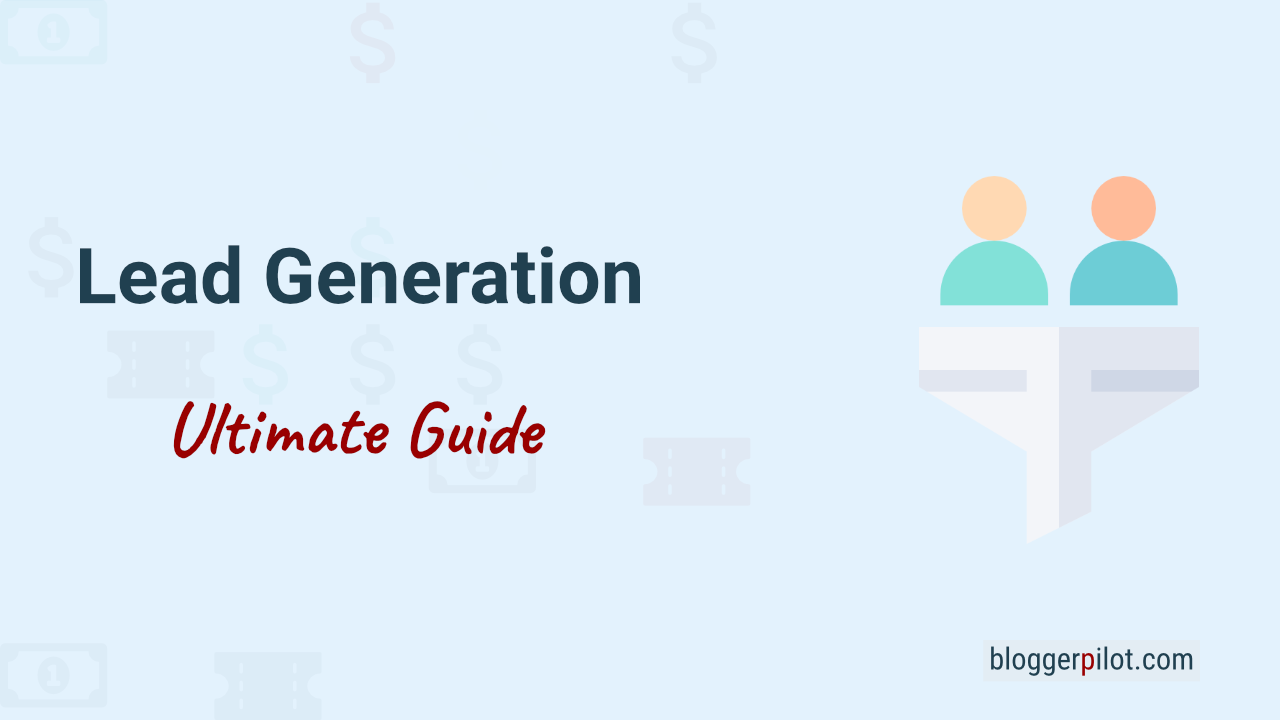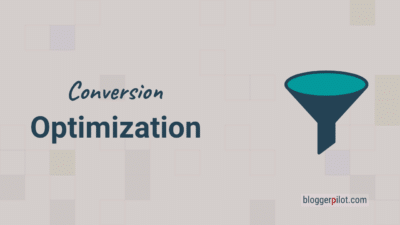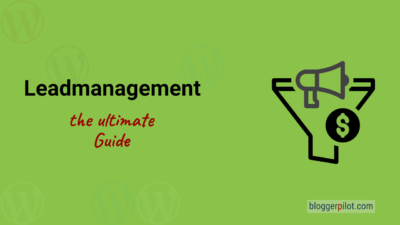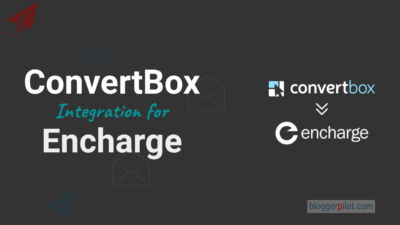Lead Generation in Online-Marketing
At the center of every successful business, and thus also in lead generation in online marketing, is the customer. Most entrepreneurs have no problem building a large customer base from the start. Often, founders come from the same industry and have already established many important business relationships. Sometimes customers are even easily transferred from the previous employer into the own business. At this point, few think about lead generation on a large scale.
But at some point, the day comes when companies start toying with the idea of looking for new customers themselves. Perhaps because the order situation has already been better, the company is set to grow, or because they want to tap into new markets and reach very specific desired customers. Then, at the latest, terms such as lead generation, community building, content marketing and search engine optimization come up for the first time.
Lead generation is a process in which companies generate as many contacts as possible who are interested in their solution and inquiries in the shortest possible time. Companies develop a concept with customer journey for their buyerpersona, thereby targeting a very specific audience
More articles on the topic of lead generation
Conversion Optimization: Strategies for Increasing Sales Figures
Lead Management: Everything You Need to Know for Implementation
Lead Generation with Blog Posts and Content Marketing
Is email marketing and newsletter marketing worth it?
MailerLite Review – Email Marketing and Automation
Perfect ConvertBox integration for Encharge
The red among the gummy bears: the qualified lead

The one, the one or the lead? In marketing and sales, everyone talks about leads at some point. But what is a lead? A contact, a prospect, a customer or something in between?
What is a lead?
In fact, this question cannot be answered in one sentence. Let’s look at a concrete example:
What is lead generation: online B2C
In online marketing, leads can have a wide variety of attributes and goals. The typical lead is a new potential customer or subscriber. A prospect for your services and offers.
Lead generation in online marketing can be:
- A new subscription to your newsletter.
- A visitor inquires about your services in the contact form.
- A click on your affiliate link.
What is lead generation: Offline B2B
Imagine your company is an exhibitor at a trade fair. Your sales engineer and your trainee are holding the fort at your booth. The first visitor enters the booth and starts talking to your sales engineer.
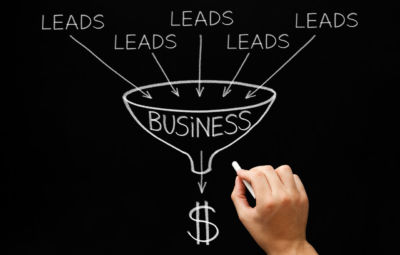
The two are engrossed in technical details when another trade show visitor enters the booth. He hands over his contact details to your trainee so that she can take part in a competition.
Both booth visitors leave their business cards. This gesture turns both visitors into leads and puts them on your list for follow-up.
The raffle participant is obviously more interested in the raffle prize than in your product, which puts him in the category of cold leads. Your next move might be to send him a standard email with a general product overview as a thank you for his visit.
The trade show attendee who has studied a product in depth expects a written offer within the next few days, which puts her in the hot leads category.
If the lady had been interested in the entire product line and requested general product information instead of a specific offer, you could have put her in the warm leads category.
So, a lead is a person or company who might have an interest in buying, or has already clearly signaled this.
Blogger Pilot
MQL, SAL and SQL in Lead Generation
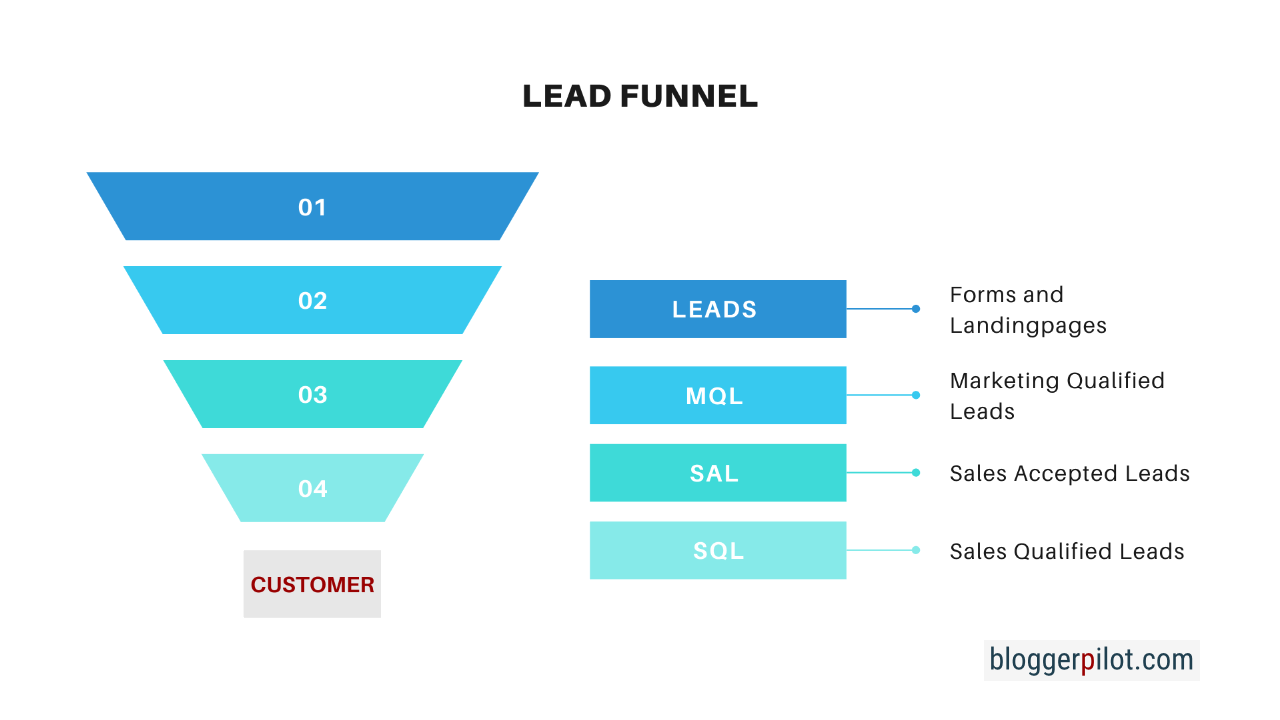
The terminology from the trade show example is often used in sales jargon. Now you’re wondering what this has to do with the abbreviations MQL, SAL and SQL?
What do MQL, SAL and SQL mean in lead generation and what is the difference?
In the sales world, we usually talk about cold leads. The term MQL, which means Marketing Qualified Leads, means the same thing. Here, outreach plays a big role, as in our sweepstakes example. An MQL is a potential new customer who signals a general interest – nothing more, nothing less.
Warm leads you can translate as SAL, or Sales Accepted Leads. These leads go a step further and express their specific need for information.
With SQL, we are not talking about databases, but Sales Qualified Leads. This is what we are talking about when the lead requests a quote for a specific product.
In your company, a uniform understanding of the term lead should be created across departments so that there is no confusion.
Your path to coveted leads: lead generation
The first part of the word lead generation is thus clear. A lead is a potential buyer. So generation stands for the acquisition or collection of new leads.
You find a point of contact with the customer, a so-called touch point, where your marketing, sales or field service can follow up.
In B2B and B2C lead generation, contacts with potential interest in the product or service are collected in a very targeted manner. These contacts are sent on a customer journey to increase sales opportunities.
Lead generation is essential for scalable growth.
First, you need to create the most detailed desired customer persona possible. How does this work? Be aware of who your ideal customer actually is. And by customer, I don’t just mean the company, but more importantly the person behind it. In other words, the person you want to reach with all your efforts.
TIP: Create your funnel with the WPFunnels plugin.
The next step is to create a sales funnel for your buyerpersona. Starting with the perception of your business during traffic generation. Through effective call-to-actions – specific calls to action – you’ll get the visitor stream to interact with you. Note: Deliver what you promise your visitors in the call-to-action to keep your conversation rate high.
This journey in the sales funnel is called the customer journey. So it’s the path your lead travels until it hopefully becomes a customer.
The responsibilities of marketing, sales, and field sales in lead generation
The interaction of the three areas might look like this: Your marketing creates awareness of your business and provides product information to the lead at the first sign of need. The information appeals to the lead, whereupon they contact your Sales using the contact information included. Sales can then schedule a field service appointment and provide a specific quote.
However, the strict separation of these three areas is a bit outdated.
In the past, it actually happened that companies deliberately let the Marketing and Sales departments compete with each other in order to increase sales success. Now, however, most have recognized the overwhelming benefits of merging the departments when it comes to lead generation.
The difference between lead generation and lead management
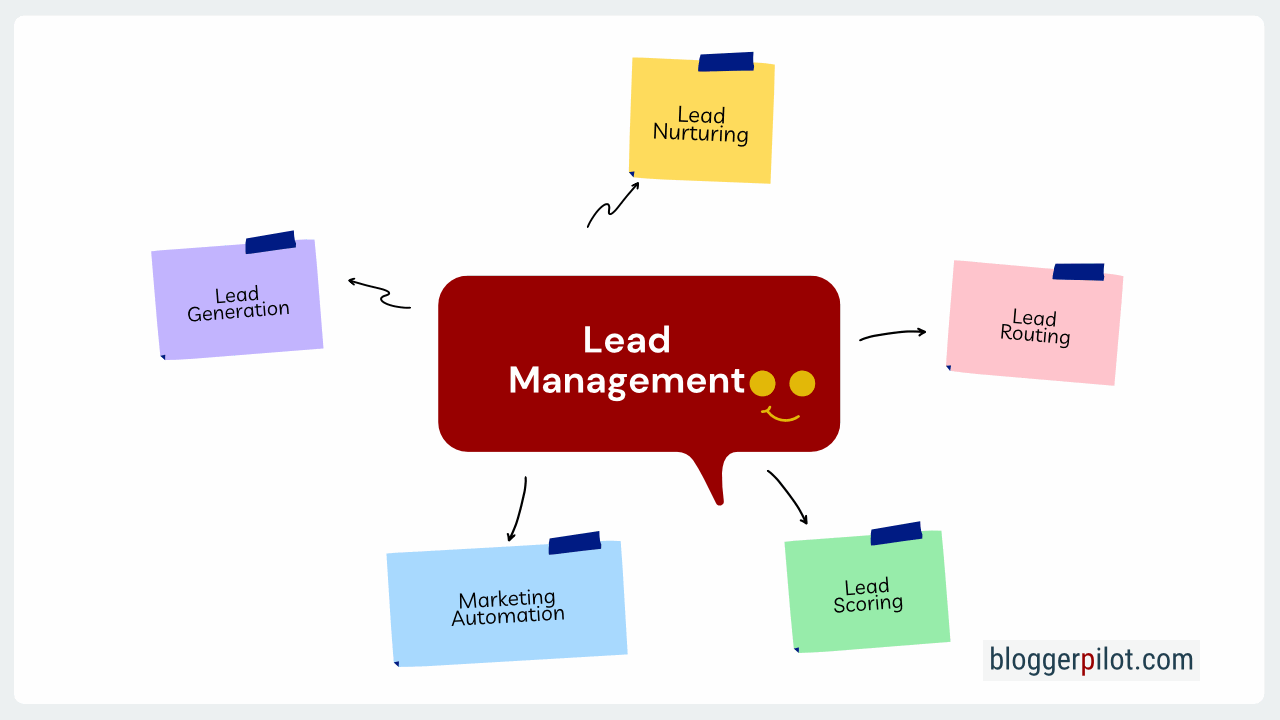
Companies integrate lead management to build and measure their business success
Lead management includes all actions that convert potential buyers into actual buyers. Lead generation is thus a part of lead management.
With lead management, you can identify behavioral patterns of and relevant content for prospects. This information is especially helpful for marketing and sales to pick up leads and successfully guide them through the sales funnel.
Thoughtful management is especially worthwhile if you generate a lot of leads that need to be evaluated. It helps you simplify complex processes and improve collaboration between marketing and sales.
Leads: Essential for businesses, or just a fad?
Clearly, if you don’t have customers, you don’t need to build and run a business.
In the beginning, a lot happens through referral marketing or by taking over customers from the previous company. But sooner or later you will reach the point where this is no longer enough.
Marketing and sales staff can target worthwhile contacts with a collection of leads, which will improve your sales rate tremendously.
Lead generation goals
Through B2B and B2C lead generation, you generate as many contacts and inquiries as possible in the shortest amount of time.
Your company develops a strategy to reach your desired customers. Thanks to the individual concept, the leads are picked up with the best working technique at each touchpoint in the sales funnel.
Thanks to lead qualification, you focus on the qualified leads to turn as many contacts as possible into happy customers.
The right concept for lead generation
Lead generation is suitable for your business if you want to increase awareness and sales.
Having records full of potential new customers is great, but that alone won’t win you anything. If your business wants to do lead generation, it should have the capacity to follow up on the leads it generates.
Your lead generation strategy can look very different. However, it should include four fixed components: your desired customer persona with a matching customer journey, a content plan that is aligned with it and adds value, working touchpoints and channels to reach them, and a sophisticated content journey.
The relevance of lead generation and lead qualification for businesses
If you get any amount of leads through lead generation, that’s a success. But it would be very ineffective to randomly target all leads now. Your company probably doesn’t have that kind of time to spare. That’s why you need to qualify the leads and figure out which leads have the greatest potential to become customers.
Lead qualification is the foundation of your content marketing strategy.
Another crucial question is at which stage of the customer journey these leads are currently located. A traffic analysis provides you with a lot of important information to play out relevant content to the leads. For example, if your lead hasn’t yet realized why your product will solve their problem, it can be fatal to show them prices right now.
The difference between inbound and outbound lead generation

Lead generation with inbound marketing means nothing more than providing your target audience with value-added content. The goal of inbound marketing is to be found by your target audience through appropriate content. For example, you can position yourself as an expert on a particular topic and ask for their email address in return for downloading your ultimate checklist.
Lead generation with outbound marketing is the classic marketing that used to be commonplace. Here, the focus is on one’s own company or product or service. The company addresses potential new customers directly with targeted advertising messages. This includes classic telephone canvassing. Often, this advertising is directly labeled as spam or “buy-me-go” advertising and can therefore be perceived as intrusive.
The specifics of digital lead generation
How many people around you never surf the web and are not active on social media?
Of course, how important digital lead generation is to you depends on your target audience. For most, however, digital channels play a crucial role. But it may well be that a combination of digital and traditional lead generation turns out to be the best solution for you.
In online marketing lead generation alone, you have a few options at your disposal:
Leads with acute need find your business through SEO/SEA
If you were looking for a craftsman in the past, you looked in the yellow pages for a suitable candidate in your area. Today, you pull out your cell phone or grab your laptop and ask Google. Your company can be found organically with search engine optimized websites and Landing-Pages on the right topic and at the optimal time. In addition, there is the possibility to appear at the top with paid advertisements – even before the organic results.
The big advantage for your company: People with an acute need search for and find your solution to their problem. So you don’t look for customers, but let them find you. The ideal starting situation for you, isn’t it?
You stay in the minds of your leads with social media
According to a study, users in Austria, Germany and Switzerland spent an average of about 1.5 hours a day on social networks in 2020. It often happens unconsciously: you reach for your cell phone during short waiting breaks, on the toilet, or even passively while watching TV. Not to mention the moments when you consciously scroll through the platforms.

In the ranking of the largest social networks and messengers by number of users, Facebook took first place in January 2021 with around 2.74 billion monthly active users (MAUs). The Google-owned video portal YouTube followed in second place with around 2.3 billion MAUs. Third place went to the messaging service WhatsApp with two billion users worldwide.
Statistia
Even if 1.5 hours seems little at first, in total this shows quite well how large the advertising space is via the social media platforms.
Unlike the topic of SEO/SEA, this is less about solving an acute problem. Entertainment, little “aha” moments, and relieving boredom are what captivate users. You can use this opportunity to showcase your brand, gain reach and build your own community.
Which social media platform makes sense for your business depends on the target audience you want to reach and where they hang out. Therefore, it’s difficult to make a blanket statement about which platform plays the biggest role in lead generation for German companies.
It would be very time-consuming to maintain all platforms and to provide them with relevant content. That’s why you should take a close look at your target group. Where do your ideal customers hang out? You should focus on these platforms.
Of course, it doesn’t hurt to be present on different platforms if your capacities allow it. Remember: Every platform works differently. Each portal has its own algorithm, which changes from time to time. Each platform has a different user behavior, which is why you should not simply publish the same posts everywhere.
With a clever combination, where the individual content elements build on each other, great synergy effects for your lead generation can arise.
The following overview can give you a good guideline. However, it’s better if you talk to your ideal customers. Start validating and finding out which platforms your target audience uses and in which way.
1. The target audience on Instagram
Instagram is all about the visuals. Much like the motto, show what you’ve got – even if you don’t. Facebook is the only place that gets more engagement.
If your target customer is in B2C business, between 15 and 30 years old and female, you’re guaranteed to find them on Instagram.
2. The target audience on Facebook
Facebook was once the channel for status updates and vacation photos. Now, the news feed and messenger is heavily used by businesses. With your own business page, you can present yourself well and already provide information about your solutions here and enable direct contact.
This social media platform is particularly suitable if you want to address a broad audience.
3. The target group on LinkedIn
LinkedIn has a relaxed – almost private – tone. Nevertheless, it is a business platform and should include your target customers if you are all about B2B. LinkedIn is actively used not only throughout Germany, but also internationally for employer branding.
4. Your target group on Pinterest
Pinterest is also all about visual communication. It can be assumed that the users there are not yet ready for sales. So the platform can be great for leading to blog posts or Landing-Pages with pinned posts.
In the beginning, Pinterest was largely considered a ladies’ tool, but both genders are now represented on it.
5. Your audience on TikTok
TikTok is all about video clips. Users can record short clips and edit them with creative filters. They can then publish these videos and admire those of other users as well.
If you want to be successful with TikTok marketing, you have to be on your toes. One trend chases the next here and anyone who can’t keep up is punished directly by the algorithm.
TikTok is particularly popular with young users. The majority of users are no older than 25.
6. Your target group on YouTube
The target group on YouTube is very diverse. Videos for all kinds of issues can be found here. This social media platform is suitable, for example, if you want to present a product in need of explanation in a video.
7. Your target group on Snapchat
Snapchat is mainly used to share messages in the form of short videos that are automatically deleted after 24 hours.
The target group on Snapchat consists largely of young people.
8. The target group on Twitter
Here, middle-aged men tweet for the most part on special technical topics. Live tickers are also posted for sporting events.
9. Your target group on Xing
Xing has similar functions to LinkedIn, but is used quite differently. Users on Xing are “quieter” and more serious.
The career portal on Xing is particularly high on the list. It is interesting to note that twice as many men as women are registered on Xing.
The secret of successful lead generation in B2B and B2C
B2B and B2C lead generation can look very different. The customer journey in B2B lead generation is usually more complicated because the decision paths are more complex.
What is true for both, however, is that without a holistic strategy tailored to your desired customer persona, you don’t even need to start!
Common lead generation methods
Online marketing is more important than ever before. You can sense this in the wide variety of methods companies are using to generate new leads.
You need to figure out for yourself which method best suits you and your business. On the one hand, it depends on your product or service. On the other hand, your competition also plays a decisive role. Use the methods that make you stand out from the crowd and that match the taste of your target group. With a coordinated interaction of several channels you can get the maximum out of it.
- Lead generation via your website
- Lead generation via your blog
- Lead generation with webinars
- Lead generation with trial versions
- Lead generation through email and newsletter marketing
- Lead generation with free whitepapers and e-books
- Lead generation via social media
- Lead generation with paid search engine and social media ads
- Lead generation with loom videos
- Lead generation with banners in professional forums
- Lead generation with podcasts
- Lead generation with listings in business directories
- Lead generation with eBay classifieds
- Lead generation with cold calls by phone
- Lead generation at trade fairs and mobile advertising spaces
Common methods for lead qualification
For companies, the question is always whether it is worth investing time in a lead. For this purpose, leads are qualified before further processing.
Probably the most commonly used method is the BANT method:
| B | A | N | T |
|---|---|---|---|
| Budget | Authority | Need | Timeline |
| Can the lead afford my product/service? | Is my lead a decision maker? | Is there a serious need, or is it just generally interested in the topic? | How urgent is it to him? |
- B = Budget: Can the lead afford my product/service?
- A = Authority: Is my lead a decision maker?
- N = Need: Is there a serious need, or is it just generally interested in the topic?
- T = Timeline: How urgent is it to him?
If that’s not enough for you, then you can extend the BANT method with GPCT:
- G = Goals: To buy lead arguments like making money with it, saving money with it, or minimizing the risk of losing money with it. Will this help your lead achieve their goal?
- P = Plans: What are his current plans to achieve the goal?
- C = Challenges: Can you help the lead overcome his challenge?
- T = Timeline: When does the goal need to be achieved?
DSGVO-compliant lead generation
The GDPR is designed to protect against misuse of personal data and regulates how it is handled within the EU. If you don’t pay attention to DSGVO compliance in lead generation, you’ll face heavy fines.
Transparency is the top priority under the GDPR: You must inform your leads what you use the data for, among other things. By the way, your lead may ask you at any time to give him full access to the stored data.
Make sure from the very beginning that you give consent to store and use the personal data with the double opt-in. Lead generation with inbound marketing is one of the easiest ways to do lead generation in a GDPR compliant way. You provide helpful content and ask for an email address in return.
Make sure you get explicit consent when handling personal data, keep processes transparent throughout, and take care of proper data protection.
Use lead generation tools and software
The need for technical support always depends on your individual situation. The tools and software should help you work more efficiently. There are several lead generation tools that take time-consuming steps away from you, leaving you more time for what’s important: following up on your leads.
A CRM system is always a good idea above a certain size, because it ensures an effective, transparent and traceable workflow. It ensures consistent processes and good internal communication. In addition, you can draw important conclusions from the collected data in order to continuously improve.
SaaS tools for lead generation in online marketing
Consult external consultants for lead management
External consultants are specialized in lead management. They can help you get there faster because you don’t have to figure out a lot of things yourself.
They draw on a wealth of experience. In some cases, consultants even specialize in certain industries, such as IT companies, so they have specific industry details and know the best practices you can take advantage of.
Consultants can help you improve with seminars, lectures and workshops, and advise you during implementation. If it suits you, you can outsource the entire strategy and concept development. You can also outsource individual tasks such as the creation of the desired customer persona or the conception and creation of content with added value.
Factors in lead pricing
If you want to know what your cost per lead will be for lead generation, you need to consider these factors:
- Designing a lead campaign
- Creation of a Landing-Page
- Setting up and configuring marketing automation software
- Creation of a lead magnet
- Traffic costs
- Manual data enrichment
These are the costs you invest in generating standard leads. They still need to be further qualified into Marketing Qualified Leads (MQL) and Sales Qualified Leads (SQL). For this purpose, a so-called Nurturing-Funnel is designed.
The leads now receive information. Depending on how they use it, it can be seen which standard leads become MQLs. Other costs are added:
- Content creation
- Creation of additional lead magnets
Each lead identified as an MQL must then be manually qualified. This can be done with one phone call, but it doesn’t have to be. In the best case, you can reach the lead directly and create a concrete offer. Otherwise, the internal qualification effort increases.
The most important KPIs for lead analysis
You should keep an eye on your lead generation using key performance indicators. These are the most important key performance indicators:
- CTR (click-through-rate): The percentage of users who become leads via your campaign CTAs.
- Conversion Rate: The percentage of your leads who take a specific action that you call to action.
- CPC (Cost per Click): Cost you pay for each user click on your ad.
- CPL (Cost per Lead): Cost to generate a lead.
- Lead generation rate: Percentage through which channel the most promising, the most and the least leads were generated in multi-channel marketing.
- ROI (Return on Investment): Percentage ratio between investment and profit.
Conclusion
First, you really need to understand what online marketing lead generation is all about. After that, you should also be familiar with the most important terms and techniques so that you can keep up with the competition.
Lead generation is an ongoing process that you need to constantly adjust in order to really pick up your visitors at eye level.
Good luck!
